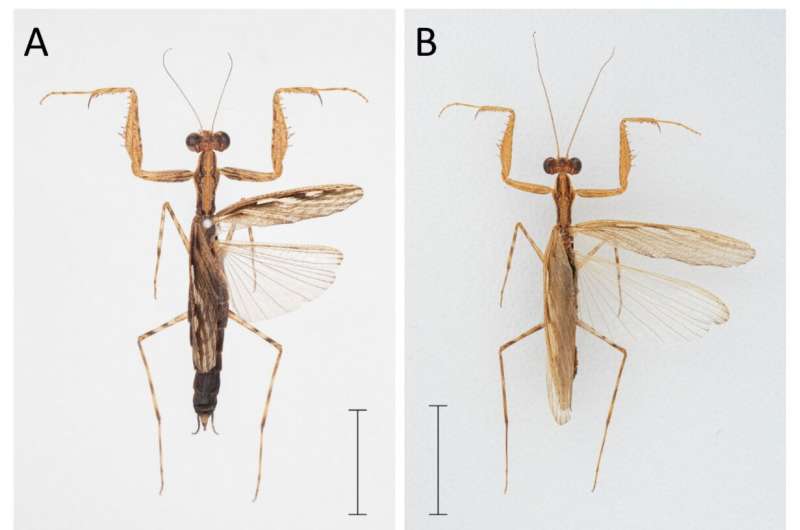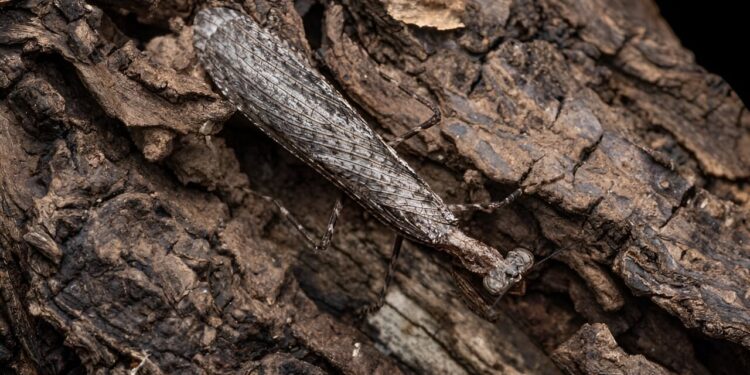The newly discovered mantis Inimia nat. Credit: Brendan James
Matthew Connors, a researcher at James Cook University, discovered two new species of praying mantis with the help of citizen scientists. The findings were published in Zootaxa.
One of these new mantises is not just a new species but an entirely new genus – the level of classification above species – and was discovered thanks to citizen scientist Glenda Walter.
“We named the new species Inimia nat – I. nat for short – because it was discovered through the citizen science platform iNaturalist – also iNat for short.
“It’s a tribute to a new way of doing natural science. With many more people able to study a much wider period of time and space, citizen scientists can provide a wealth of data that would not otherwise be achievable,” Connors said.
He said if someone went out and found three different insects, there was a good chance that at least one of them was a new species.
“In fact, there are new species everywhere. Here in Australia, it is estimated that less than a third of our species have been discovered and named. Scientists are working hard to document these organisms, but new research has shown that even the Amateur naturalists can help discover new species,” Connors said.
He said the new genus of mantis is the first in its subfamily to be named before the moon landing, and it is the first new genus of Australian mantis to be named since the new millennium.

I am a corymbiasp. nov. A. Dorsal habitus, female allotype. B. Dorsal habit, male holotype. C. Male genital complex, dorsal view. D. Male genital complex, ventral view. AB. Scale = 10 mm. CD. Scale = 1mm. Credit: Zootaxa (2023). DOI: 10.11646/zootaxa.5380.3.1
A second new mantis, named Ima corymbia, was also discovered by Connors. Long thought to be the same as its sister species, the Paperbark Mantis (Ima fusca), a detailed examination of the body structures of the two revealed that they were different species.
Observations by citizen scientists have helped reveal details about where this new mantis lives and how it behaves.
Connors said the tyranny of time and distance was being overcome with the help of citizen scientists.
“Data that could take a researcher years or even decades to complete are instead collected by amateur naturalists through citizen science programs. This is a wealth of information that we are only just beginning to exploit ” Connors said.
“Citizen science is a fantastic way for anyone interested in nature to venture out and start making discoveries. There is so much we don’t know that it’s almost certain that citizen scientists will continue to discover countless new species.”
More information:
Matthew G. Connors et al, A revision of the genus Ima Tindale (Mantodea: Nanomantidae: Fulciniinae) with the description of a new genus, Zootaxa (2023). DOI: 10.11646/zootaxa.5380.3.1
Provided by James Cook University
Quote: Citizen scientists help discover new mantis species (December 1, 2023) retrieved December 2, 2023 from
This document is subject to copyright. Except for fair use for private study or research purposes, no part may be reproduced without written permission. The content is provided for information only.



